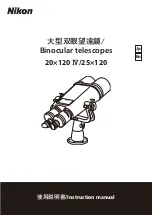
What can Be
What can Be
Observed?
Observed?
CHAPTER 4
16
The Moon
16. Observing
the Moon
is simple and always spectacular! This
satellite is easy to locate and accessible all year round. The Moon
is essentially observed along its terminator, which is the division
between the daylight side and the dark night side of the planetary
body. Observing this area easily reveals a surface studded with
craters, rilles, and various formations. The closer you are to the
terminator, the more visible the relief of these formations is due
to the shadows cast by the Sun. However, the full moon is of little
interest to observe, since the entire surface of this satellite is
illuminated from the front and therefore does not have any shadows.
The Stars
17. With the exception of our own star, the Sun (see next page),
the stars
are too far away to see their surfaces. No matter how
magnified a star is, it will always appear as a bright spot.
However, stargazing can still be quite interesting. Stars offer a
whole range of colors (white, yellow, blue, red, orange, etc.), their
brightness can change, they can evolve alone or in groups, and we
now even know that some of them are surrounded by planets! It
might be quite fun to try and understand what you observe. For
example, you might want to learn why one particular star is red or
why another star is part of a triple star system. You can discover a
world of knowledge!
The Planets
The various planets, thanks to their ever-changing appearance, are
great to observe. They should preferably be observed when they
are highest in the sky, i.e. when they cross the meridian (to the
south), in order to limit atmospheric disturbances. The layer of air
to isthicker for the stars close to the horizon. The atmosphere must
be calm for quality observations.
Amongst the planets of our solar system, four planets are really
worth observing.
18.
Venus
is the closest planet to the Sun. It is to be observed
after sunset in the west or before sunrise in the east, since it is
closer to the Sun than the Earth. With a telescope, it is fairly easy
to see its phases like with the Moon. Venus’ surface detail cannot
be observed.
19.
Mars
, orange in color, is interesting to observe when it is closest
to the Earth (about every two years). During this time, a few large
formations and its white polar caps can be observed on its surface.
Mars also has phases.
20.
Jupiter
is one of the most spectacular planets. Its interesting
angular diameter and evolutionary cloud formations make it a fun
subject to observe. It is also accompanied
16
17
18
19
20
The Moon
Photo Sébastien Brangbour
The double star Albireo
Photo Nicolas Aguilar
Venus
Photo Eric Mattern
Mars
Photo Jean Christophhe
Jupiter
Photo Didier Auber
get
























